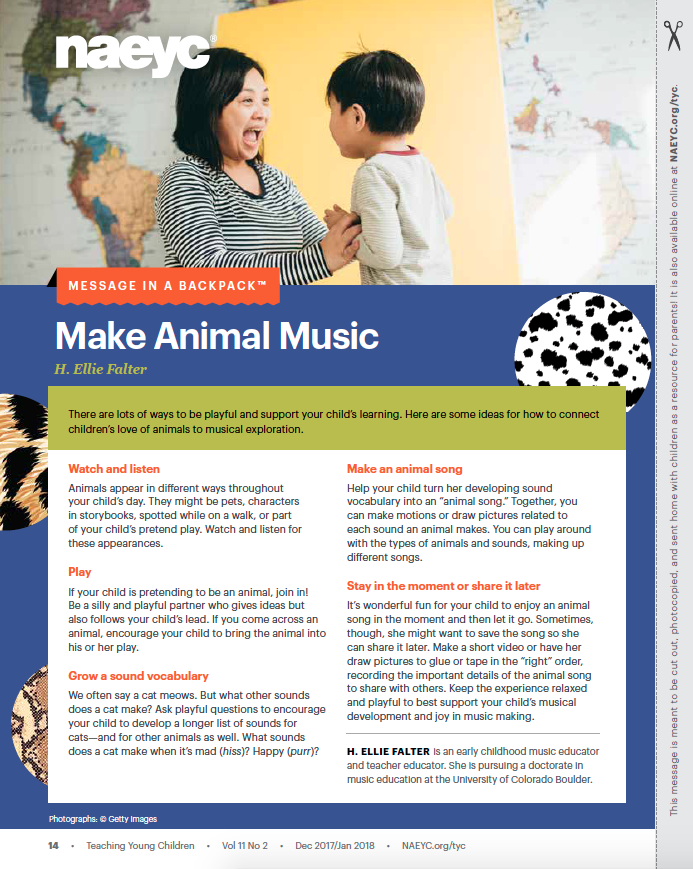Message in a Backpack™ Make Animal Music

You are here
There are lots of ways to be playful and support your child’s learning. Here are some ideas for how to connect children’s love of animals to musical exploration.
Watch and listen
Animals appear in different ways throughout your child’s day. They might be pets, characters in storybooks, spotted while on a walk, or part of your child’s pretend play. Watch and listen for these appearances.
Play
If your child is pretending to be an animal, join in! Be a silly and playful partner who gives ideas but also follows your child’s lead. If you come across an animal, encourage your child to bring the animal into his or her play.
Grow a sound vocabulary
We often say a cat meows. But what other sounds does a cat make? Ask playful questions to encourage your child to develop a longer list of sounds for cats—and for other animals as well. What sounds does a cat make when it’s mad (hiss)? Happy (purr)?
Make an animal song
Help your child turn her developing sound vocabulary into an “animal song.” Together, you can make motions or draw pictures related to each sound an animal makes. You can play around with the types of animals and sounds, making up different songs.
Stay in the moment or share it later
It’s wonderful fun for your child to enjoy an animal song in the moment and then let it go. Sometimes, though, she might want to save the song so she can share it later. Make a short video or have her draw pictures to glue or tape in the “right” order, recording the important details of the animal song to share with others. Keep the experience relaxed and playful to best support your child’s musical development and joy in music making.
Photographs: Getty Images
Message in a Backpack™ is available online in Spanish. Visit NAEYC.org/tyc to start reading now!
H. Ellie Falter is an early childhood music educator and teacher educator. She is pursuing a doctorate in music education at the University of Colorado Boulder.
